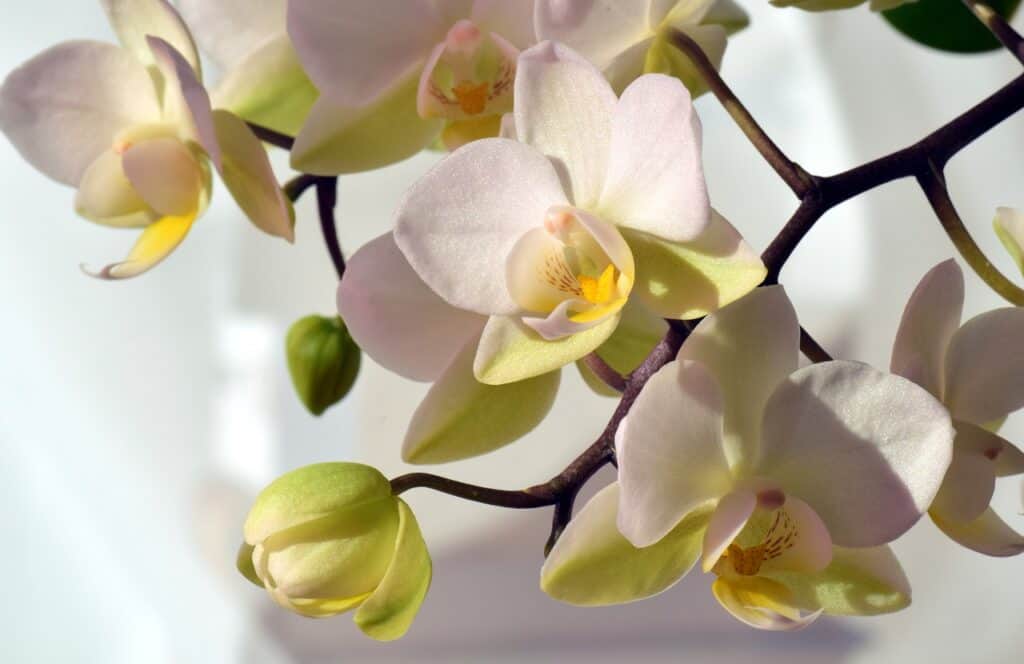Orchids are one of the most popular and widely cultivated plant families in the world. They are known for their exquisite and delicate beauty and come in a vast range of colors, shapes, and sizes. Proper care and maintenance are essential for orchids to thrive, and the choice of the growing medium plays a vital role in their growth and health. Two of the most common growing mediums used for orchids are orchid bark and sphagnum moss. In this article, we will discuss the differences between the two and the advantages and disadvantages of using them.

What is orchid bark?
Orchid bark is a type of medium made from the bark of trees, usually fir, pine, or redwood. It is a popular choice for many orchid growers because it is a natural and long-lasting medium that provides excellent drainage and aeration for orchid roots. The bark is available in different sizes, ranging from small to large chunks, and can be used alone or mixed with other mediums such as perlite, charcoal, or coconut coir.
Advantages of using orchid bark:
- Good drainage: Orchid bark provides excellent drainage for orchid roots, preventing them from becoming waterlogged and prone to rot.
- Aeration: The large pores in the bark allow air to circulate freely around the roots, promoting healthy growth and preventing the accumulation of harmful bacteria and fungi.
- Long-lasting: Orchid bark is a long-lasting medium that does not break down quickly, making it a cost-effective option in the long run.
- Easy to use: Orchid bark is easy to handle and can be mixed with other mediums to create a customized mix for specific orchid species.
Disadvantages of using orchid bark:
- May require frequent watering: Orchid bark tends to dry out quickly, especially in hot and dry conditions, requiring more frequent watering than other mediums.
- May not retain enough moisture: Some orchid species require more moisture retention than orchid bark can provide, making it unsuitable for certain plants.
What is sphagnum moss?
Sphagnum moss is a type of medium made from the dried, compacted moss of sphagnum plants. It is a popular choice for many orchid growers because it retains moisture well and is ideal for orchids that require high humidity levels. The moss is available in different grades, ranging from fine to coarse, and can be used alone or mixed with other mediums such as perlite, charcoal, or bark.
Advantages of using sphagnum moss:
- Retains moisture: Sphagnum moss retains moisture well, providing a consistent supply of water to orchid roots and preventing them from drying out.
- High humidity: Sphagnum moss creates a humid environment around orchid roots, ideal for orchid species that require high humidity levels.
- Easy to use: Sphagnum moss is easy to handle and can be mixed with other mediums to create a customized mix for specific orchid species.
- Versatile: Sphagnum moss can be used for a wide range of orchid species, making it a versatile option for growers.
Disadvantages of using sphagnum moss:
- Poor drainage: Sphagnum moss can retain too much water, leading to waterlogging and root rot if not used correctly.
- Short lifespan: Sphagnum moss breaks down quickly, requiring frequent replacement and making it a less cost-effective option in the long run.
- Prone to fungal growth: The high moisture content of sphagnum moss can encourage the growth of harmful fungi and bacteria, leading to disease in orchids.

Conclusion
When it comes to choosing between orchid bark and sphagnum moss as a growing medium, it ultimately comes down to personal preference and the specific needs of your orchids. Both have their advantages and disadvantages, so it’s important to consider factors such as your orchid’s natural habitat, its water and nutrient requirements, and your level of experience and comfort with the different mediums.
Orchid bark is a popular choice among orchid enthusiasts because it provides excellent drainage and allows for good air circulation around the roots. It’s also relatively easy to find and use, making it a good choice for beginners. On the other hand, sphagnum moss can be a great choice for orchids that require a lot of moisture, as it retains water well and can help prevent the roots from drying out. However, it can be more challenging to use, and overwatering can quickly become an issue.
Ultimately, the key to successful orchid cultivation is to understand the unique needs of each orchid and to provide it with the appropriate growing conditions. By experimenting with different growing mediums and observing how your orchids respond, you can find the best option for your particular orchid collection. With the right care, your orchids can thrive and provide you with many years of beauty and enjoyment.

